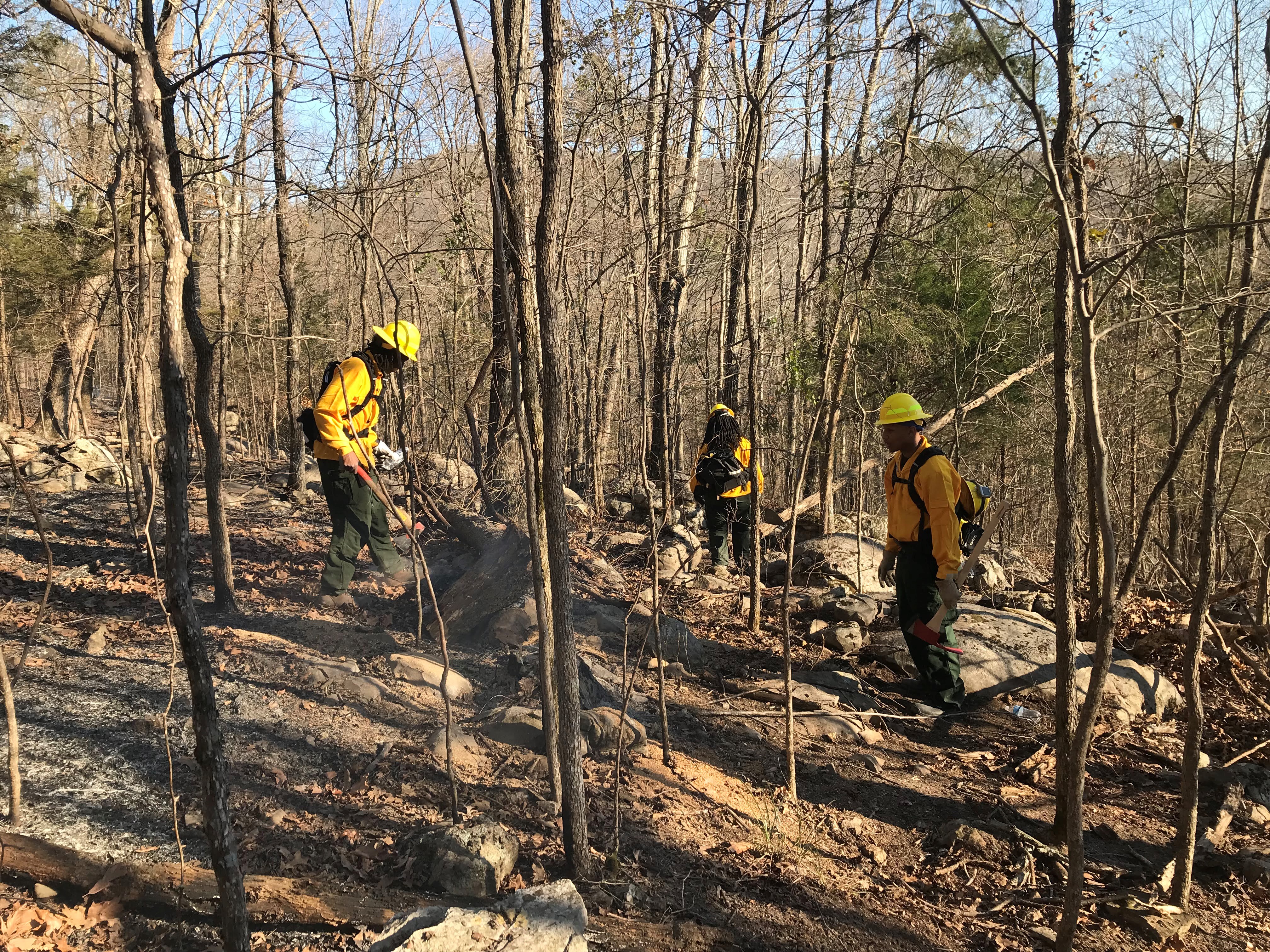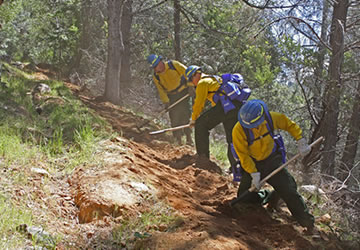
The Forest Service is teaming up with three historically Black colleges and universities, also known as HBCUs, to expand forest fire prevention and management training opportunities.
Florida A&M University, Southern University in Louisiana, Tuskegee University in Alabama, and Alabama A&M University have joined together to create the 1890 Land Grant Institution Wildland Fire Consortium. The partnership is modeled after Alabama A&M University’s successful FireDawgs program, a student-led forest firefighting team created in 2009. Since its creation, the FireDawgs have mobilized for several wildfires, rescues and prescribed burning operations in partnership with the Forest Service.
Hands-on training offers students their first experiences with live fire while under the instruction of experienced wildland firefighters. Students learn to use drip torches, a common tool for prescribed burning, as well as how to operate and maintain chainsaws safely. In addition to the practical skills, they also learn how fires behave under weather conditions and in different types of fuels, like in heavily wooded areas or in tall grass.
“I am learning so many skills and techniques about fire that I will be able to use one day in my future career,” said Bradley Massey, Alabama A&M University forestry student and Fire Consortium participant. “Our instructors make this experience impactful with their years’ worth of knowledge and service.”

Once the students receive their Wildland Fire Consortium training, and pass the test, they are certified to fight wildland fires. Like the FireDawgs, the program also provides additional response capacity that benefits the surrounding communities, as students are on call to respond to local incidents like fires and floods.
“The collaboration between the Forest Service and these institutions is making for an excellent program. The skills and experience that the students are learning will serve them well as they mature in their natural resources education and, ultimately, their careers,” said Jeremy Whigham, a forester who leads the FireDawgs program. “Wildland fire affects us all. We must learn to live with fire, and firefighting is a necessary component of living with fire.”
The varying experience the instructors bring to the table is what has made the program so dynamic.
“The diversity of people and experiences with varying fields of study has made our discussions very engaging,” said Kendall Brown, wildlife ecology major at Tuskegee University. “The viewpoints and knowledge have helped me to see the bigger picture when it comes to fighting wildland fire.”
The program is helping to bring more people of color into the forestry and wildland fire professional fields. According to the Society of American Foresters, White non-Hispanic persons receive a higher share of bachelor’s degrees in agriculture and natural resources, making up 91% of all bachelor’s degrees. While African American and Hispanics make up 1.9% and 3.6% of degree recipients respectively.
“Nationally, minority students are underrepresented in careers in forestry and wildfire,” said Darrius Truss, fire and heritage management staff officer for the National Forests in Alabama.
Truss, an alumnus of Alabama A&M University’s accredited forestry program, said the agency’s multi-institutional partnership seeks to remove barriers to underrepresented communities in careers related to forestry.
“Beyond the boots on the ground, students will be able to concentrate their studies in forest fire management, which eventually should create a more inclusive workforce,” said Truss. “Having a pipeline of students pursuing an education in forestry and fire is crucial as the wildland fire crisis continues to rise.”
In July, at the height of the 2022 fire season, more than 70 large fires burned across the nation, with more than 22,000 personnel responding – nearly three times more than the 10-year average for the month of July.
As the agency strives to confront the wildfire crisis from all angles, the 1890 Land Grant Institution Wildland Fire Consortium is helping to meet a critical staffing need at the agency. The consortium is opening the door for agencies to recruit and retain a diverse and representative workforce.






